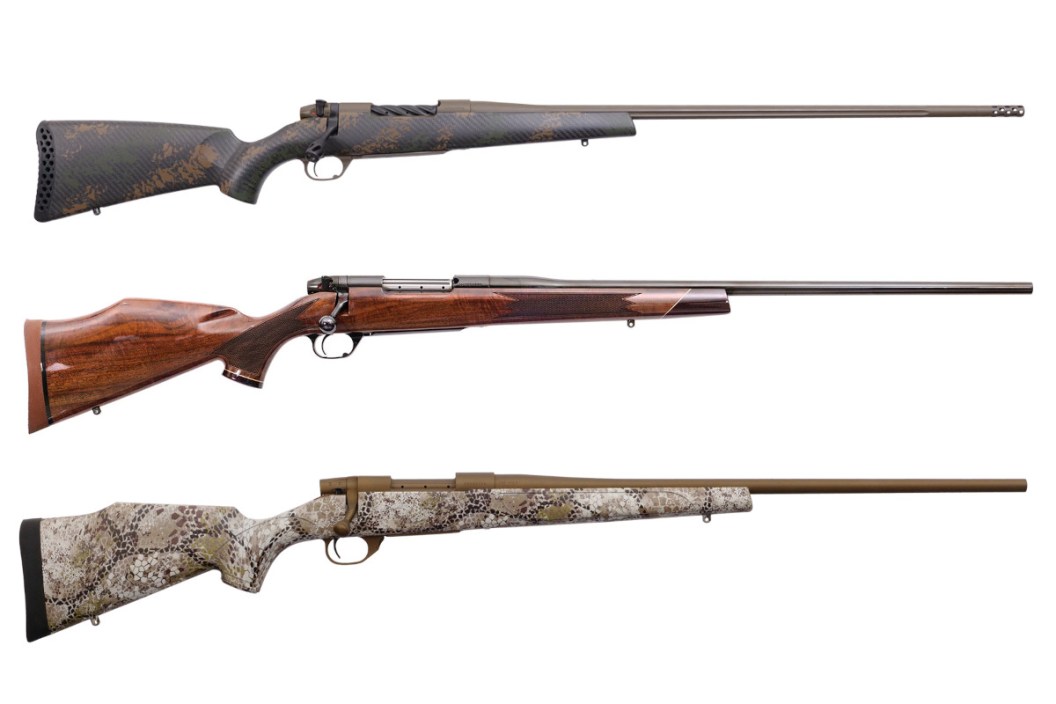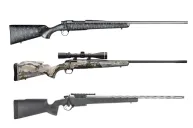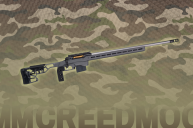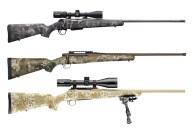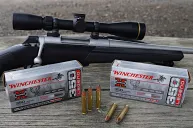There's a plethora of big game cartridges on the market today and some are inevitably going to get overlooked a bit as more popular offerings garner all the attention. That often seems to be the case with the .257 Weatherby Magnum. This round has been around for a very long time, is extraordinarily fast, and yet probably doesn't get the attention it deserves since it's not quite as large as some of the other offerings on the market today. However, the .257 WBY Mag is a great, flat-shooting, long range cartridge that's good for everything from coyotes to deer with attention paid to proper shot placement. Let's look at this cartridge a little more in depth and explore some of the rifles currently being chambered for this high velocity round.
The .257 WBY is a speedster
Before we go any further, we should take a moment to appreciate the efforts of this round's designer, the legendary wildcatter Roy Weatherby. It was 1944 and World War II was raging. The war was marked with all sorts of shortages of raw materials here on the home front. Yet somehow, Weatherby overcame this hurdle and managed to keep tinkering away on new Wildcat ammo rounds. For the .257, he took the mighty .375 H&H Magnum and necked it down significantly to make what was at the time among the fastest rounds on the planet.
When using smaller, 87-grain bullets, muzzle velocities of nearly 3,800 fps are possible with the .257. Most factory ammunition tends to stick with bullet weights between 90 and 100 grains. Chalk that up to the design of the round. It doesn't have a great ballistic coefficient, which is why the maximum bullet size you'll usually find available is around 120 grains.
Still, looking at the numbers, there's no denying what the .257 can accomplish. Let's consider some factory ammo ballistics. Hornday's 110-grain ELD-X Precision Hunter rounds have a muzzle velocity of 3,240 fps and deliver 2,564-foot pounds of energy. Even at 100 yards, it's still doing 3,024 fps and is delivering 2,233-foot pounds of energy. Hornady says these cartridges have zero drop at 200 yards.
Then there's Nosler's 100-grain AccuBond Trophy Grade. These rounds have a muzzle velocity of about 3,400 fps and they're still doing 3,151-fps at 100 yards. It's dishing out 2,323-foot pounds of energy at the muzzle and 2,424-foot pounds at 100 yards respectively. Weatherby also makes their own factory ammo where they advertise a muzzle velocity of 3,605 fps with a 100-grain Interlock bullet. Their 100-grain TTSX bullets have an advertised 3,570 fps muzzle velocity pumping out about 2,830-foot pounds of energy. As you can see, there's no shortage of long range ability or power here.
What can you hunt with a .257 Weatherby Magnum?
The answer to "What can you hunt with this round?" is a little bit of everything. It handily takes care of varmints like coyotes, but it's also a dynamite round for pronghorns, bighorn sheep, whitetails, and mule deer. Even elk, moose, and bears have been taken with this cartridge. As Ron Spomer Outdoors points out, many hunters pass over the .257 because they mistakenly believe the bullets are too small for larger game.
We already mentioned how the ballistic coefficient isn't as great as some other rounds on the market, which probably reinforces those notions further. However, the .257 Weatherby Magnum cartridge has more than enough energy behind it to take down all the animals we've mentioned above, and maybe more. It all comes down to shot placement and the types of bullets used. You want something that's going to offer the most expansion without expending too much energy.
The disadvantages of the .257 Weatherby Magnum
We do need to briefly touch on the cons of this round because there are some downsides. As you may have already guessed from the speeds, the .257 is a hot round and it's not great for barrel life. We've heard of shooters burning out the barrel in as few as 600 to 1,000 rounds. But we've also heard from shooters who report they've shot 1,500 to 2,000 rounds with their guns and are still shooting sub-MOA groups. Your mileage may vary depending on the type of ammunition used and how often you take it out. Most people choose to use it as a dedicated hunting rifle rather than something you shoot for fun at the range every weekend.
Speaking of the range, we should mention the ammo. The stuff from the factory is not cheap. It's also often hard to find without ordering it online, too. The .257 WBY may be best suited for reloading enthusiasts who like to experiment with their rounds. Considering most shooters get more performance out of a handload than factory ammo anyway, the .257 is well suited for shooters who like to experiment and squeeze the best performance out of their rifle. Now, let's finally look at some of the current rifles available on the market.
Weatherby Mark V Backcountry
The Mark V is one of the most reliable bolt action hunting rifles on the market these days. This rifle has an incredibly short 54-degree bolt throw that makes cycling faster than ever. Weatherby guarantees sub-MOA accuracy with factory premium ammo. This rifle has a 26-inch barrel length with a 1:10 rate of twist. The barrel also features a muzzle brake to reduce the felt recoil. The weight comes in an incredibly light 6.2 pounds, thanks to the spiral fluted bolt and carbon fiber stock. This makes it perfect for those hunting expeditions miles from the nearest roads and civilization. Weatherby also makes a left hand variant of this Backcountry model for all the southpaws out there.
Weatherby Mark V Deluxe
This is an expensive rifle, but it's a great option for anyone who wants a more traditional style. It also weighs a little more, 8.2 pounds, which is going to help with recoil and long distance accuracy. Most of that weight comes from the Gloss AA walnut stock. It's fitted with a Pachmayr Decelerator recoil pad for extra comfort. This rifle has all the same features as the Backcountry including the 54-degree bolt throw and Accubrake ST muzzle brake system in the 26-inch barrel with a 1:10 twist rate. The finish is a traditional blued steel and gives this rifle a beautiful classic look that any hunter will find appealing.
Weatherby Vanguard Badlands
The Vanguard series is more affordable than the Mark V series. However, it doesn't skimp on features or quality. The Badlands model features a 26-inch barrel with a 1:10 twist rate. Weatherby gave it a burnt bronze Cerakote finish that's going to help protect the rifle during the worst weather nature can throw at you. More time in the field means better odds of success, right? This rifle comes in at 7.5 pounds and features an incredibly ergonomic Monte Carlo stock. The bolt body is fluted and there's a three-position safety for extra peace of mind. This rifle also comes with a sub-MOA guarantee at 100 yards straight out of the box.
Weatherby Vanguard Synthetic
Most of Weatherby's offerings are rather pricey, which can be discouraging for some hunters who are looking at .257. However, this Synthetic comes in at a little over $600, giving you a more affordable option. This rifle features a cold hammer forged 26-inch barrel with the 1:10 twist rate that's optimal for this cartridge. Even though this rifle is on the lower end of Weatherby's offerings, it still has the same sub-MOA shot guarantee and it comes highly rated from users who usually cite the finish and build of the gun as being better than they expected for such an inexpensive option. This rifle features a Griptonite stock and comes in at 7.5 pounds, which is about the perfect weight for a .257 for optimal accuracy.
For more outdoor content from Travis Smola, be sure to follow him on Twitter and Instagram For original videos, check out his Geocaching and Outdoors with Travis YouTube channels.
